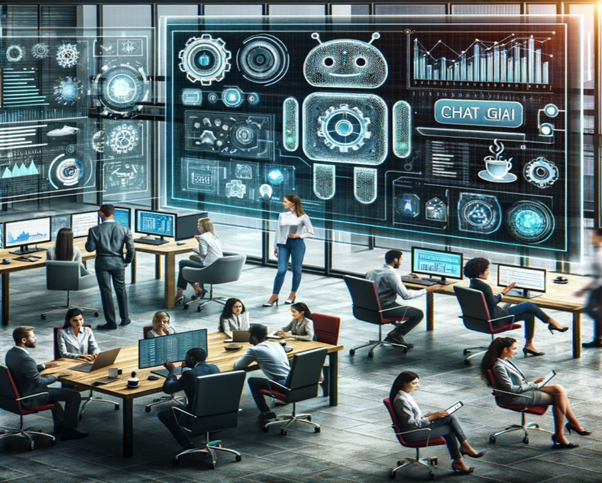
Integrating AI-powered tools, such as ChatGPT, has brought about a significant revolution in business operations, marking a new era of heightened workplace efficiency. Nevertheless, alongside these advancements, concerns emerge among workers regarding potential impacts on job security.
The Changing Landscape: Past, Present, and Future
AI's influence isn't confined to traditional clerical roles; professions ranging from lawyers to coders to financial analysts now confront the prospect of augmentation or substitution as AI models advance to mirror human-like cognitive processes. According to research by Forrester, as many as 2.4 million jobs in the United States could be susceptible to replacement by AI by the year 2023, signifying a pivotal transformation in the job market.
Identifying Vulnerable Roles
Strategies for Adapting to AI Integration
1. Leverage AI for Efficiency: Integrate AI tools into workflow processes to streamline basic tasks, enabling focus on areas where human skills excel, thereby enhancing productivity.
2. Mastering ChatGPT Prompts: Enhance the effectiveness of AI tools like ChatGPT by mastering the creation of specific and context-rich prompts, thereby improving the quality of AI-generated responses.
4. Enhance Research Skills: Supplement AI capabilities by utilizing various research channels and fact-checking responses, ensuring access to accurate and up-to-date information.
5. Develop Emotional Intelligence: Cultivate emotional intelligence to effectively navigate complex interpersonal dynamics, enhancing collaboration and relationship-building skills beyond the capabilities of AI.
6. Foster Creativity: Emphasize creative thinking skills to contribute innovative ideas and reassess established processes, an area where AI often falls short.
7. Build Personal Brand: Establish a unique niche within your field and develop a personal brand to differentiate yourself from AI, enhancing influence and competitive advantage.
8. Continuous Upskilling: Mitigate automation risks by continually upskilling, focusing on human-centric skills such as creativity, critical thinking, and problem-solving while enhancing digital literacy to adapt to evolving job market demands.
Embracing Change for Growth
In conclusion, while AI undoubtedly reshapes the employment landscape, proactive adoption of these strategies empowers workers to navigate uncertainties and thrive amidst automation. Stay informed, embrace change, and leverage AI for personal and professional growth in the dynamic workplace of tomorrow.





